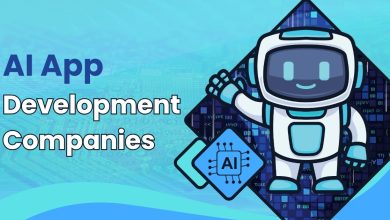
The web is changing in a fundamental way. For 30 years, websites have been designed for humans, with pages to read, buttons to click, forms to fill out. But three new technical protocols are enabling a different model: one where AI agents can access services directly, communicate with each other, and act on behalf of users.
In Q4 of last year, Anthropic released the Model Context Protocol (MCP), an open-source standard governing how agents talk to external systems like databases and APIs. MCP enables apps (like Google Calendar or Notion) and other services to transform into AI-powered personal assistants. Thousands of MCP servers have already been announced, with companies like OpenAI, MongoDB, Cloudflare, PayPal, and Wix launching their own servers or integrating with the protocol to enhance AI agent connectivity with external enterprise software tools and data.
Then, in early April 2025, Google launched its Agent2Agent (A2A) protocol, a new standard designed to complement MCP that governs how agents communicate with other agents, exchange information, and coordinate actions. Google has partnered with more than 50 technology companies to develop this protocol, which it says will “pave the way for a future where agents can seamlessly collaborate to solve complex problems and enhance our lives.”
In May, Microsoft raised the stakes by introducing the Natural Language Web, or NLWeb. According to Microsoft, NLWeb will be the “fastest and easiest way to effectively turn your website into an AI app, allowing users to query a site’s contents by directly using natural language, just like with an AI assistant or Copilot.” The thinking is this protocol will replace traditional protocols like Hypertext Transfer Protocol (HTTP) to establish a new framework that will enable agent systems on websites.
The introduction of these new protocols has set the stage for the rise of the Agentic Web, the end of websites as we know them, and innovative ways for brands to use AI agents to create highly personalized, contextual experiences for customers.
The Agentic Web: Redefining the Internet
The legacy web was built on a client-server model primarily designed for humans to read and interact with visual information. The Agentic Web, however, is redefining the web experience through a fundamental shift.
Imagine a web where AI agents are first-class citizens, capable of communicating and transacting directly with services through the new protocols and language-native interfaces.
Instead of just serving up web pages for eyeballs, businesses can expose their data and capabilities through APIs for language models, allowing agents to understand and operate services on a user’s behalf. It’s the web’s back-end, finally catching up to the intelligence of its new front-end: the AI agent. And it will be led by voice.
To illustrate this shift, let’s look at an example of the current web vs. the Agentic Web.
- Current HTTP-based web: A consumer wants to buy a new backpack. They may open a browser and go to a specific brand’s website to begin their search through that retailer’s catalog of backpacks. They may also open a browser and type in a query about “backpacks on sale,” “waterproof backpack,” or some other qualifier. This results in a list of search returns from brands that customers must sift through.
- NLWeb-based Agentic Web: That same consumer searching for a backpack can open an Agentic Web browser or ask an AI agent, “Find me a backpack that’s under $100, that’s waterproof, and ships today.” This query triggers one or more agents to search multiple websites to retrieve exactly what the customer asked for.
The Agentic Web has the potential to break through the barrier between browsers and humans. When consumers type in an HTTP-based URL, they are limited to just one site and one experience. The Agentic Web, on the other hand, will empower customers to search multiple sites at the exact same time, with more personalized results.
The End of Websites As We Know Them
To achieve this goal, we’ll see significant changes in how the web and websites are fundamentally built. They’ll transform from readable “brochures” about a brand’s products into dual-purpose platforms: one layer for human consumers, and another for AI agents.
Websites, as we know them, are display windows. They’re optimized for human eyes and indexed by search algorithms based on keywords. This model becomes obsolete when your primary user is an AI agent, which means businesses will need to rethink their digital presence completely.
The priority shifts from designing a beautiful user interface to creating a well-structured, machine-readable layer of data and services. An AI agent doesn’t care about your website’s color scheme: it cares about accessing your inventory data, understanding your clearly stated return policy, or booking an appointment through a clean AI-native interface.
This doesn’t mean visual interfaces disappear entirely. Browsers will still exist, but their role changes. Instead of being the primary navigation tool, they’ll serve as quick visual confirmations for decisions already orchestrated by voice. A customer might ask their agent to find flight options, review the choices through a brief visual display, then confirm the booking verbally. The browser becomes a supporting actor rather than the main stage.
Protocols in Action: The Agentic AI Customer Experience
Customer service demonstrates how these protocols could work together in practice. The three standards create a technical foundation for agent-to-agent coordination that wasn’t previously possible.
Now, AI agents might initiate proactive outreach based on trigger events (a shipping delay, a product back in stock, a warranty expiration). Instead of customers checking order status or calling support, their agent monitors these events and surfaces relevant information or handles issues autonomously.
For businesses, this means rethinking customer service infrastructure. Whether these specific protocols become the standard or not, the direction is clear: the focus is moving from training human agents to navigate multiple systems to building clean, agent-accessible interfaces and defining handoff protocols between AI systems. Companies that adapt their technical architecture now will be positioned to deliver the conversational, proactive experiences customers will come to expect.


